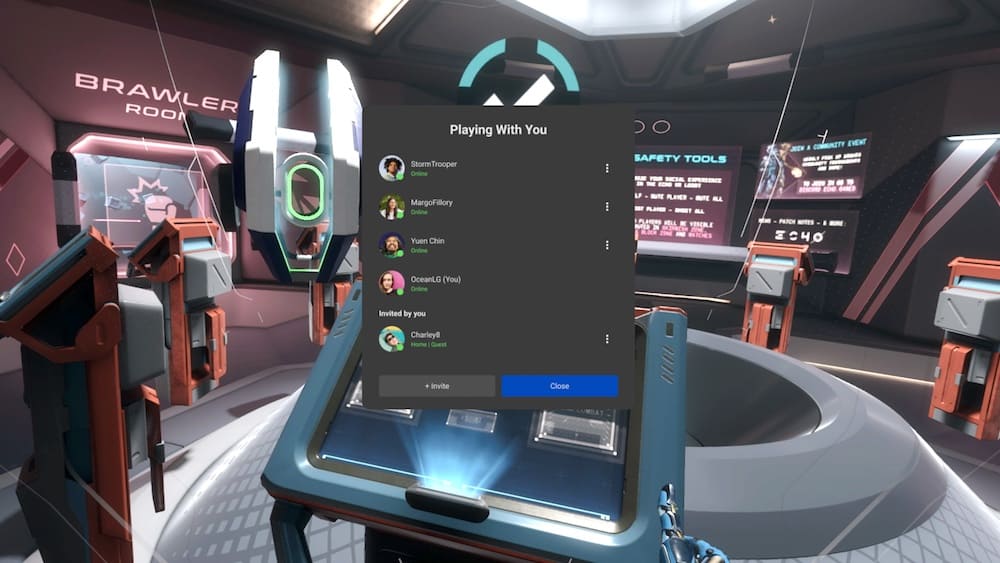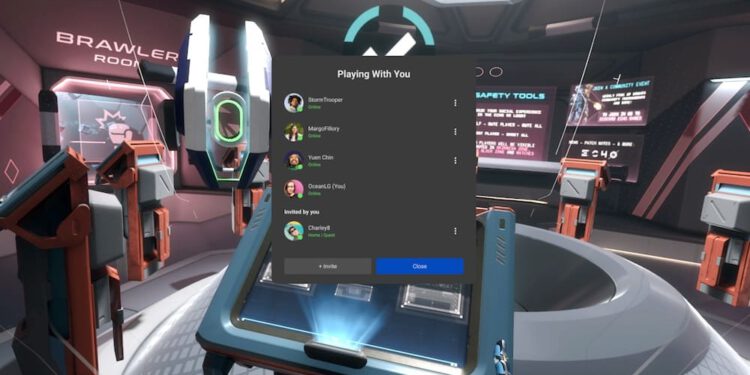
Update 31.0 is currently being released for Oculus Quest. What features and improvements does it bring?
The update is being released for VR users in stages from July 20. As usual, the release of the update for all Quest users can take up to a week, and in some cases more.
You can check the current version of the Oculus Quest firmware in the “Settings” > “Information”section. If the update is ready for installation, the option will appear in the same window. However, manual installation is not required, since Oculus Quest updates are usually installed automatically as soon as they become available.
Update 31.0 offers new features for inviting friends to VR games, two convenient features for Messenger, a separate security tab in the settings, saving passwords in the Oculus browser, improvements and bug fixes for streaming VR to a PC via Air Link, support for headphones via USB-C (Quest 2 only) and an interface that allows AR applications to view videos.
Invite your friends to play VR games
Until now, everyone who wanted to play VR games with friends had to organize parties. The new interface makes it easier to connect to a multiplayer game: VR games that have implemented a new feature now offer the opportunity to send an invitation to the game to friends or players with whom you have recently played. If they accept the invitation, they will be transferred directly to the multi-user session.
In the universal menu, you can see who you are playing with, make settings for the group, or join the group again if you have left it in the meantime.
The first VR games to support the new invitation feature are Beat Saber, Blaston, Demeo, Echo VR, ForeVR Bowl, Hyper Dash, PokerStarsVR and Topgolf . Soon others should follow them.
The second, also a new way to invite friends and players to VR games is to invite them via a link. The link is created on the social media tab of the Oculus app on the smartphone, where all installed VR games that use this feature are now displayed.
After creation, the link can be transmitted free of charge via the Internet. Link creators can choose how long the link should be active. By clicking on the link, you can select the VR glasses that you want to use, and you will be teleported directly to the desired VR game.
Messenger: new comfort features
Two new features simplify the use of messenger in VR: Quest users can now see whether a message has been sent and read, and can respond to messages using emoticons by selecting messages using the start button and opening the corresponding menu.
The Security tab and saved passwords
In update 31.0, Oculus Quest gets a special security tab in the settings. The option to set a lock pattern has been moved here.
After the copy and paste function, one more important convenient feature has appeared in the Oculus browser: now it can remember passwords and enter them if necessary.
Passwords are encrypted and stored locally in virtual reality glasses. If you share your Oculus Quest with other users, you can specify on the new security tab whether the autofill feature requires entering a lock pattern.
Air Link: better image quality, less crashes
Facebook has improved the dynamic bitrate of virtual reality streaming on the Air Link wireless PC. The result: fewer streaming interruptions, as well as better image quality.
Also fixed a bug that caused the Air Link to crash. It is not yet clear whether this will solve the Wi-Fi connection problems that Air Link users are complaining about after the 30.0 update.
AMD graphics card users should also experience fewer crashes if they have certain drivers installed.
Support for headphones via USB-C
Oculus Quest 2 now recognizes headphones via USB-C. If the connector is also busy, priority is given to this audio output. Regardless of this, the microphones in both types of headphones are disabled, and the built-in microphone is used.
More information about USB-C audio can be found in the Support Center.
Interface for AR applications via video review
Probably the most exciting new feature is the interface that allows developers to use video reviews. This could lead to the first mixed reality apps for Oculus Quest.
Facebook announced the interface in September 2020, and since then only developers of the Spatial telepresence app have had access to this feature.
The so-called “Passthrough API” does not appear in the official list of functions, but was announced by Mark Zuckerberg via Facebook. Additional information will be available soon.









